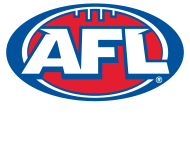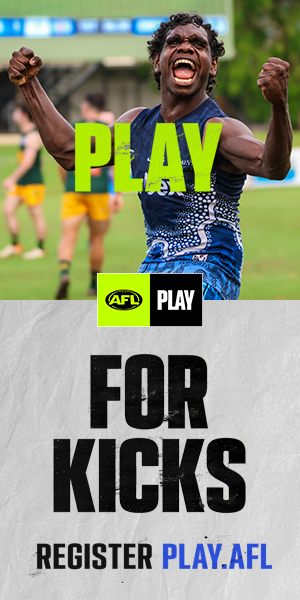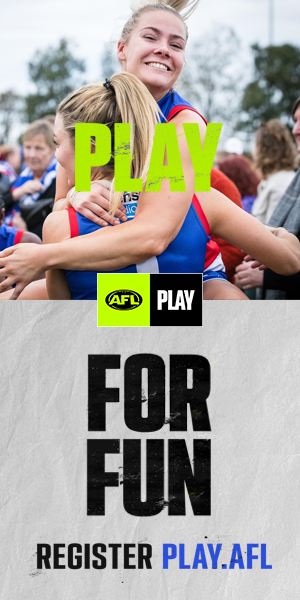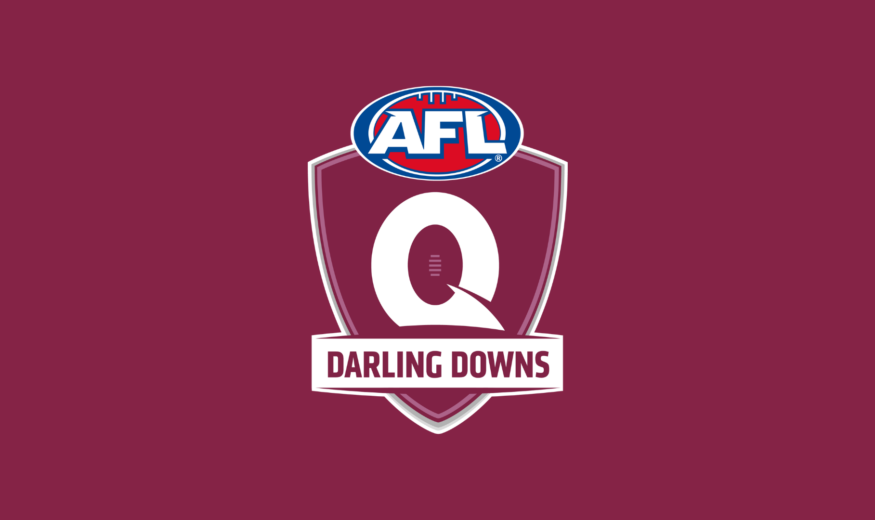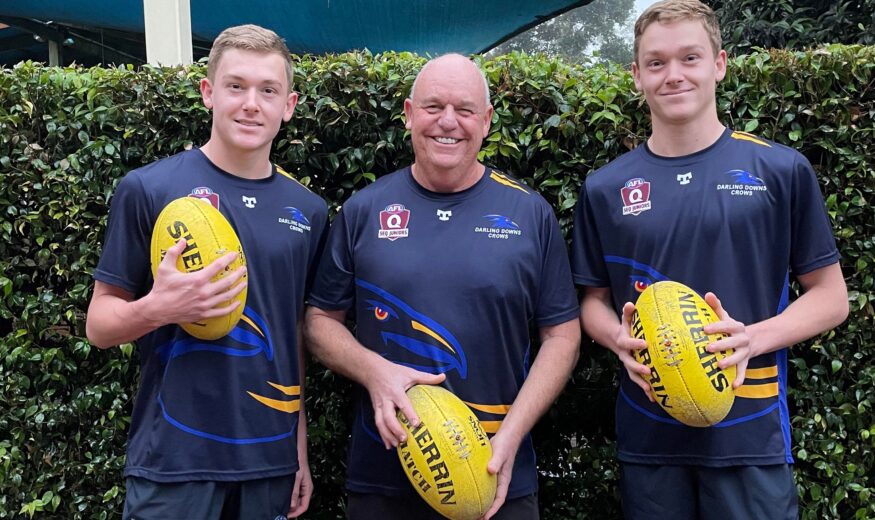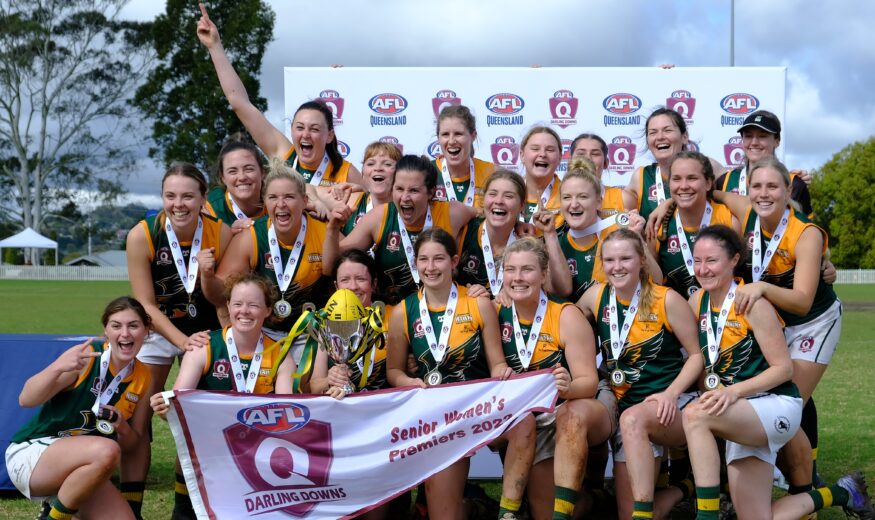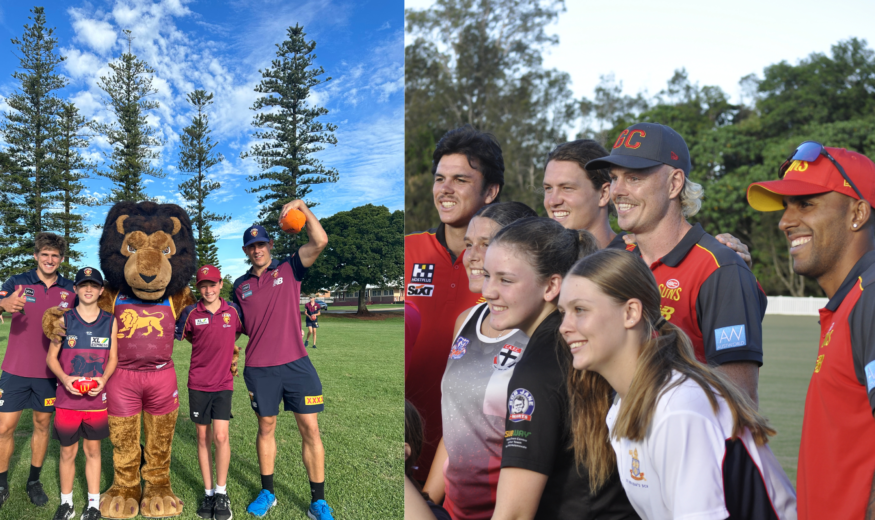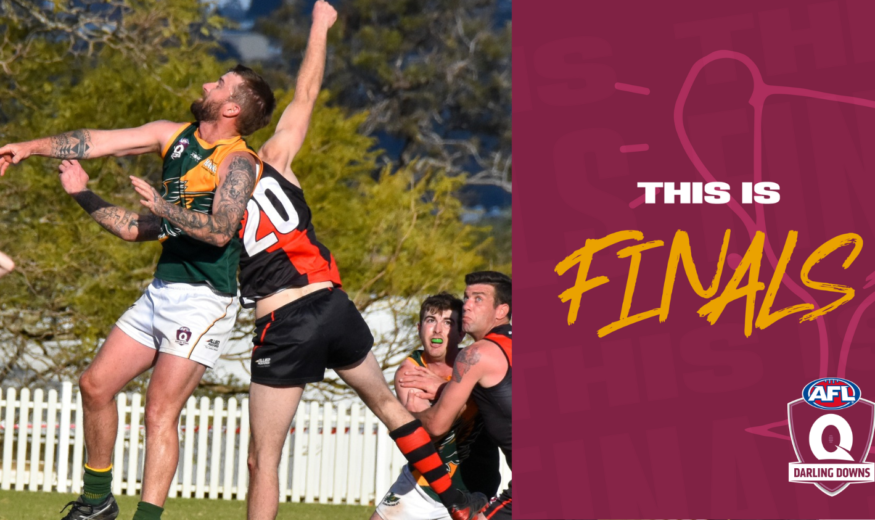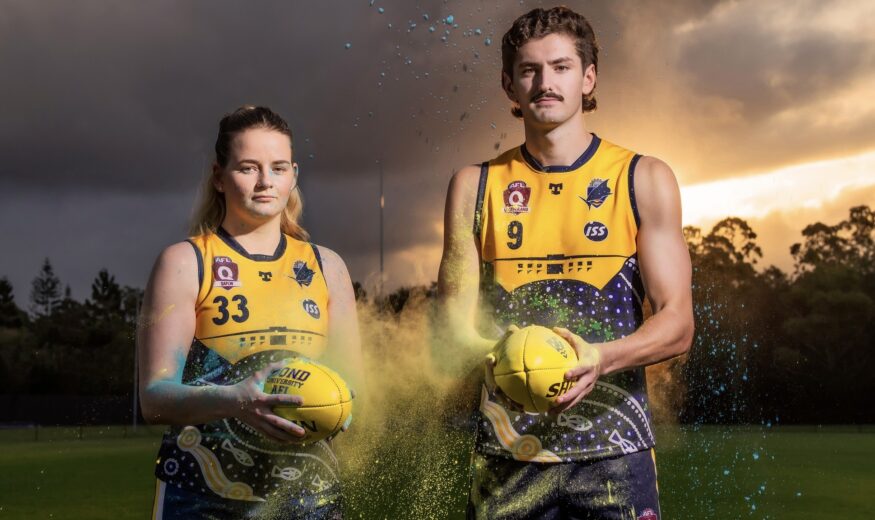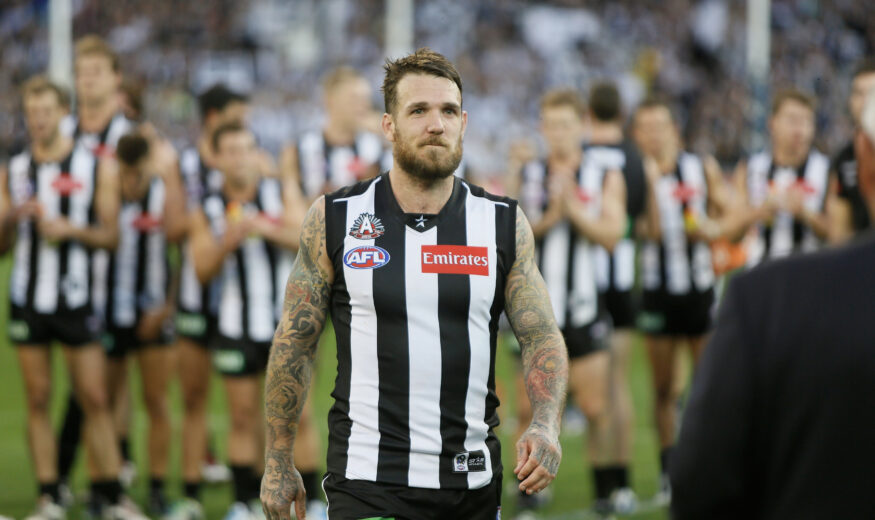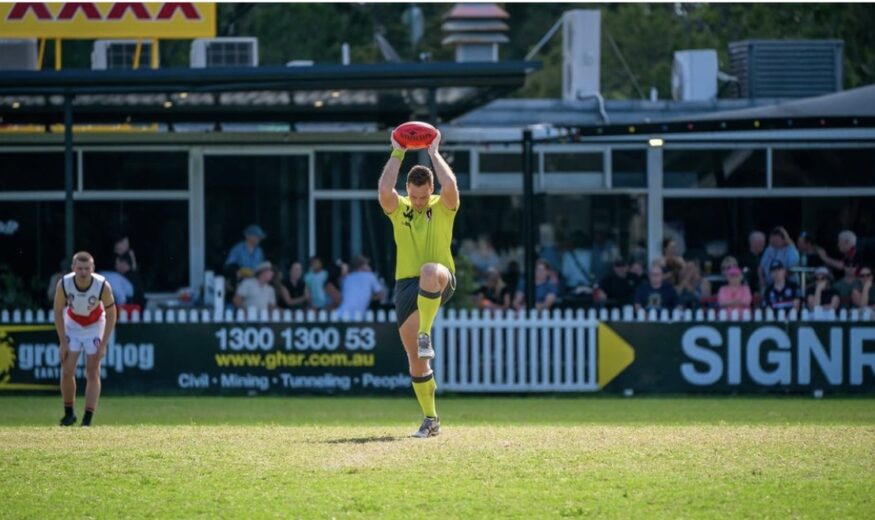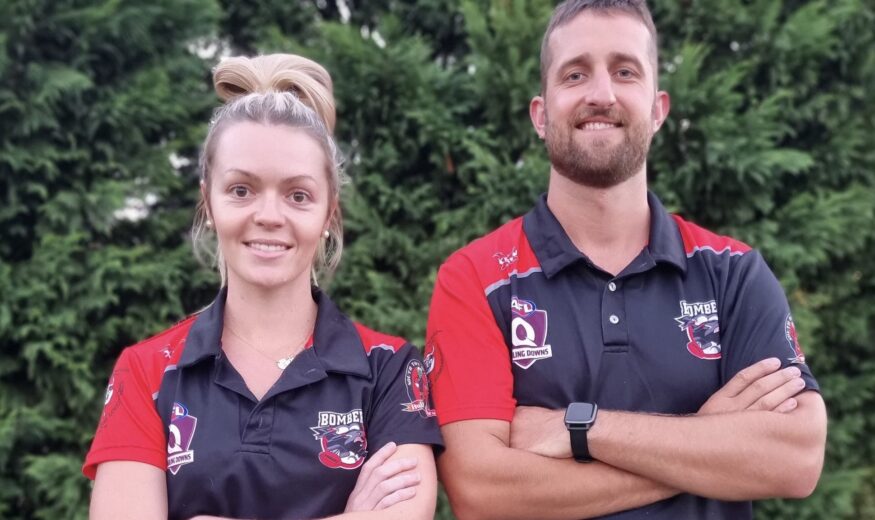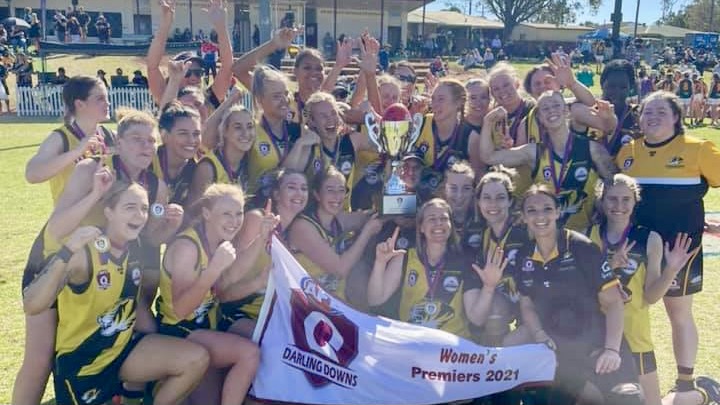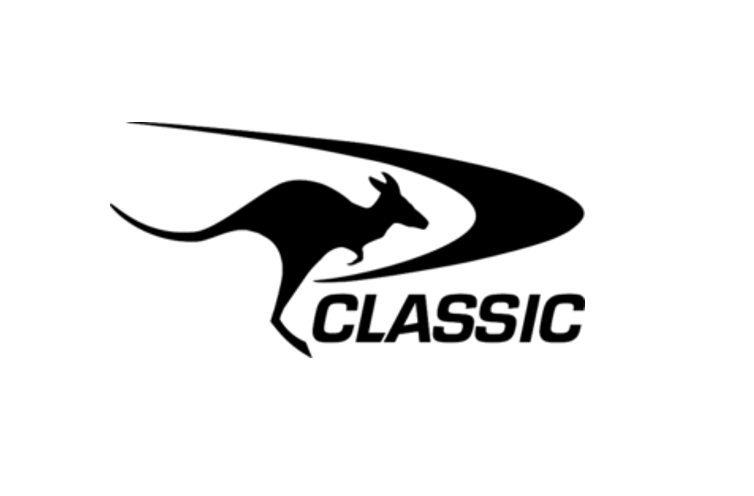AFL T History
A Brief History of AFL Townsville 1955-1989
(Written by Kevin Geddes)
The League was launched with three teams, RAAF, Hermit Park and South Townsville in 1954. After a series of exhibition matches competition began with 10 fixtures and a Grand Final between composite teams. Games were played at RAAF Oval and Gill Park and an exhibition game at the Townsville Showgrounds. All clubs were founded with juniors. Rod Wilson’s recruiting style was extremely novel for Hermit Park juniors. Rod was a policeman stationed at Mundingburra and he would give the local youth he caught at minor indiscretions the choice of playing Aussie Rules or a ticket.
The Garbutt club was formed in 1956. Currajong came into the comp in 1961 substituting for the RAAF who had struggled for numbers in the previous three years and the four team comp continued until 1967. A lot of the services personnel left, played for the new club Currajong. The Army entered the scene in 1968 when 6 RAR and a revived RAAF side expanded the league to 6 teams. 1969 saw the 2nd Royal Australian Regiment substitute for the 6th who were transferred and with the Fourth Field Regiment the competition expanded to 7 sides. 1970 the RAAF again dropped out, 2RAR and 4th Field headed off to Vietnam and a combined army side was admitted to the TAFL as Lavarack accompanied by newly launched Townsville whose numbers were mainly made up of airmen displaced when their team pulled out and some players from Hermit Park again made it a 6 team comp. Lavarack who were not competitive and did not reaffiliate in 1971, so five sides contested the 1971 premiership season and seconds were introduced for the first time. The Army combine were back for 1972 where, because of their insistence that army players play for the army side, Lavarack won the premiership.
The Wulguru club, who were established in 1968, entered senior sides and this made the league up to 7 sides. The TAFL adopted an enduring policy at the 1973 AGM excluding army based teams on the basis that army players would be denied the opportunity to play for district clubs as per what happened in 1972. The Upper Ross club, whose numbers consisted of players mainly from the Army’s Battalion, were 1974 Reserve Premiers but with the completion of the Yabulu nickel project which had bought a host of players to the clubs, many of these players either returned home or moved to other competitions causing the reserves to be suspended and thus the newcomers were thrown into the deep end and for the next 3 seasons struggled to be competitive before disappearing towards the end of 1977. The League continued with 6 clubs with Upper Ross substituting for Garbutt who withdrew their teams in 1976, ‘77 in controversial circumstances but they were back in 1978.
The competition was to remain with 6 sides from 1976 – 1982 until in 1983 a side from Burdekin increased the numbers once again to 7. Unfortunately the Burdekin side came and went having been subjected to a series of unmerciful thrashings which was not surprising considering the fact that the side was made up from converted Rugby players and the team had almost no support apart from the management of the Delta Hotel. The demise of Wulguru followed in early 1984 when the league made a decision which would have significant consequences.Four seasons of summer football followed and while the “Darwin” seasons attracted some top players junior development was stifled.
’84 and ’88 were transitional years to and from the summer comp.A Townsville side, the Eagles, were entered in the Cairns comp in 1988 and although the side reached the Preliminary Final the pressure of the 500 kilometre round trip every other weekend took its toll on players keenness and their bold thrust towards the Grand Final faltered. Except for 1989 when University and Hawks swelled the numbers to 7 clubs, the strength of the league hovered between 4 and 5 teams which is the size of the current competition. Garbutt were expelled midway through ’89. University, as in ’80 and ’81, could not sustain the interest and after a Reserve flag in ’89 were history a few weeks into 1990.
JCU students from the football states returned home when holidays came around and so the football club closed down during these periods because of a lack of local players to sustain their teams.When Currajong in 1990 swallowed up a penniless Townsville Swans who had switched from South Townsville in June 1982 to become the Townsville Swans the combined sides became the Curra Swans.The nomination of the Hawks club in ’89 caused a stir due to the number of current players recruited from Hermit Park, Currajong and South Townsville using suspect overtures, although be that as it may the club were premiers by a point in their first season.
A Brief History of AFL Townsville 1990-2012
(Written by Jack Growden)
The once flourishing league of the 1970s and 1980s lost three teams in 1989 and the following year only Hermit Park (foundation club) , West Townsville (Est. 1970), Curra Swans (a merger of South Townsville and Currajong), and the University Hawks (Est. 1989) remained. The early 1990s saw West Townsville and the Hawks play in six consecutive grand finals, highlighting the futility of the TAFL at the time. Eventually, Hermit Park and the Curra Swans recovered, with the former playing the Hawks in the 1995 Grand Final. In 1996, the University Hawks appeared in their eighth successive grand final since their founding, losing to the Swans in their quest for four premierships in a row. Curra then completed their triple, dominating the late 1990s and winning their last flag in 1998. In 1999, the Northern Beaches Lions entered the TAFL in an attempt to expand the shattered league. Unfortunately, they endured season after season of enormous defeats. In one match that year, Steve Mazey of West Townsville kicked 27 goals on his own!
In 2002, the only remaining club from the league’s foundation 47 years before, Hermit Park, won its first premiership in sixteen seasons. It went on to join the University Hawks in a “premiership spree” in which the two clubs won the next seven premierships. The Northern Beaches Lions were renamed to the Twin City Lions and continued to struggle throughout the decade. Despite the lack of growth in the Seniors, AFL Townsville enjoyed a massive surge in the Junior ranks. For example, in the early 1990s, the Juniors had been practically non-existent for twenty years. By the turn of the century, numbers had increased, and by 2004, when the author first played in Townsville, numbers were strong. However it did not stop there by any means. Now, on any given Saturday, hundreds of children and teenagers grace the Aussie Rules fields giving their all for their respective clubs. Juniors such as Jake Spencer (current AFL player – Melbourne FC) have gone on to play on higher levels down south. Furthermore, a purpose-built Junior ground, pioneered by Hermit Park life members, Brad Clarke and Ian Joyce, was completed in Murray in 2010.
Two years prior, Tony Ireland Stadium, a state of the art facility, was opened, and Hermit Park restricted University to the lowest score ever in a Senior grand final to claim their eighth premiership. In 2010, the Thuringowa Bulldogs (former West Townsville) won their first Senior premiership since 2001 in their 40th year and went on to go back to back in 2011 against the Tigers who had played in arguably the greatest game in Townsville of all-time in the week prior. Against their neighbouring club, the Curra Swans, Hermit Park went through to the grand final after ten minutes of extra time as the game was drawn at the final siren. This was a first in Townsville’s history. In 2012, the Tigers defeated the Bulldogs in the Senior grand final despite the latter being undefeated for the entire season.
Having been omitted for two seasons, the Lions regrouped and returned with much more solid foundations in 2012 under the banner of “Townsville City Lions”. Despite losing every match that year, often at record margins, the determined Lions upgraded their Garbutt facility and won their first Senior match in June 2013 by a goal against University. Their continued growth is a genuine step forward for AFL Townsville.
In 2013, AFL Townsville, and its last remaining foundation club, Hermit Park, celebrate their 60th season (due to the summer competitions in the mid-1980s). Considering its vulnerability at several times in its history, the survival of the TAFL, and its relative stability and current state of growth is something to be proud of. From the great men whose names are immortalised through the naming of their clubs’ grounds after them, to the life members of every club and the TAFL, right the way down to the waterboys, Junior coaches, scoreboard attendants, boundary umpires, and canteen ladies, Australian Rules football in Townsville is forever grateful for your effort in keeping our great sport alive and flourishing in North Queensland.
For further information visit – Townsville SportsTG
